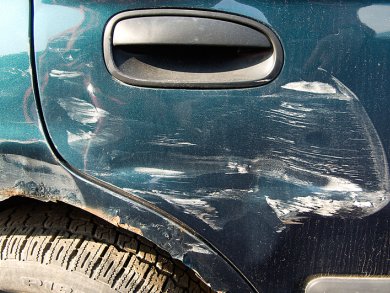Repairing or retouching damage to car paint or furniture can be expensive and inconvenient. Being able to smooth over the scratched surface yourself is now one step closer: Stuart Rowan and co-workers, Case Western Reserve University, Ohio, USA, have developed a polymer-based material that can heal itself.
These metallosupramolecular polymers are low-mass polymers with ligand end groups that non-covalently link through metal-ion binding. UV light electronically excites the metal-ligand motifs, generating heat which breaks the interactions and simultaneously reduces the viscosity of the material, making it a liquid. It then flows to fill any gaps or scratches. On removal of the light source, the material cools, re-assembles, and solidifies so that the scratch is undetectable.
While materials that self-heal on application of heat are known, this is the first example of an optically induced healing. Light gives more control over the healing than heat as it can target only the defect and leave the rest of the material untouched.
- Optically healable supramolecular polymers
M. Burnworth, L. Tang, J. R. Kumpfer, A. J. Duncan, F. L. Beyer, G. L. Fiore, S. J. Rowan, C. Weder,
Nature 2011, 472, 334—337.
DOI: 10.1038/nature09963 - Video interview and simulation >>>





ı hope they can improve it better and better.everybody needs this kind of stuffs to reduce the repairing costs